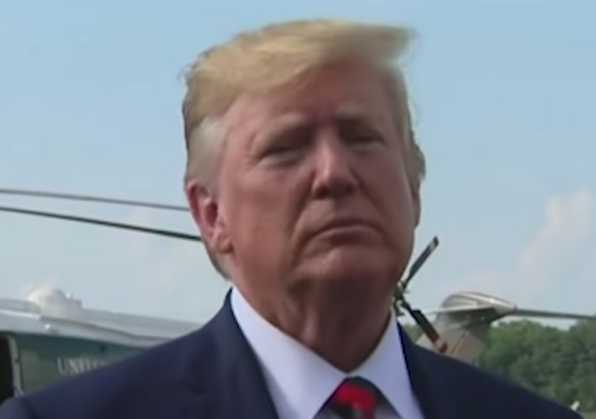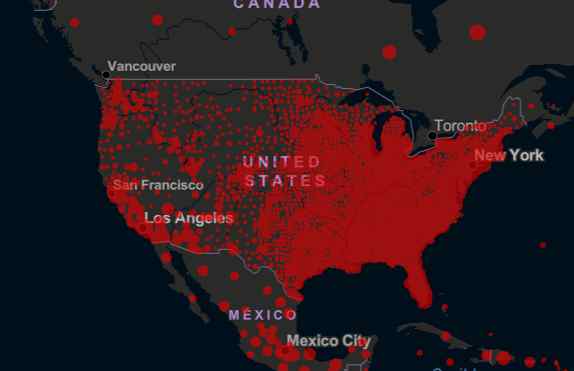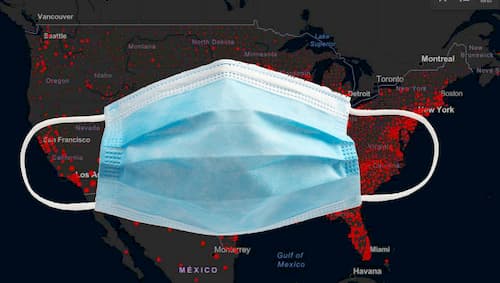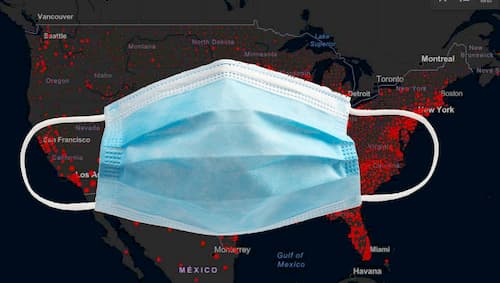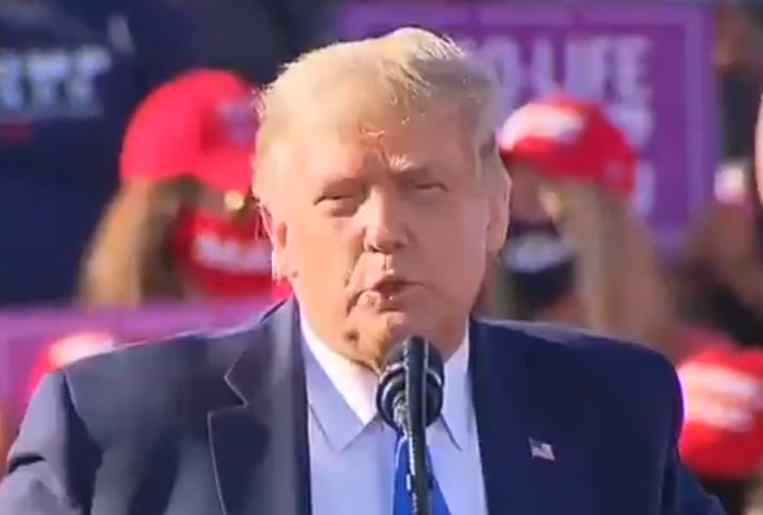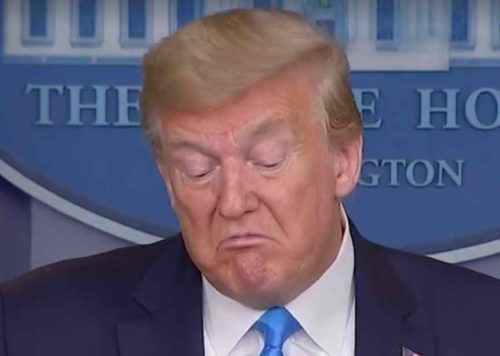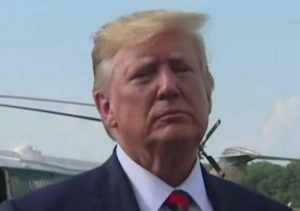 The analysis links 18 rallies to over 30,000 cases and 700 deaths—but doesn’t include events in October, when states saw infections surge
The analysis links 18 rallies to over 30,000 cases and 700 deaths—but doesn’t include events in October, when states saw infections surge
As the U.S. coronavirus caseload surpassed nine million on Friday, Stanford University economists published a study that connected 18 of President Donald Trump’s reelection rallies from June 20 to September 30 with more than 30,000 Covid-19 infections and over 700 deaths—tallies that don’t include the month of October, when cases nationwide surged.
“Our analysis strongly supports the warnings and recommendations of public health officials concerning the risk of Covid-19 transmission at large group gatherings, particularly when the degree of compliance with guidelines concerning the use of masks and social distancing is low,” wrote (pdf) Stanford’s B. Douglas Bernheim, Nina Buchmann, Zach Freitas-Groff, and Sebastián Otero. “The communities in which Trump rallies took place paid a high price in terms of disease and death.”
The new study comes after an analysis published Tuesday by the think tank Center for American Progress which found that half of the 22 campaign rallies Trump held between June and September were followed by county-level increases in Covid-19 infections. As Common Dreams reported Friday, attendees of the president’s more recent reelection events have also been taken to the hospital with possible hypothermia and required medical attention for heat-related illnesses.
With less than a week until Election Day, the United States saw a record number of new daily Covid-19 cases on Friday—99,321, according to Johns Hopkins University’s global tracker. Meanwhile, both Trump and Vice President Mike Pence were on the campaign trail. The president held rallies in Michigan, Wisconsin, and Minnesota while Pence held two events in Arizona.
As the economists explained, “Trump rallies have several distinguishing features that lend themselves to this inquiry,” including that “they involved large numbers of attendees. Though data on attendance is poor, it appears that the number of attendees was generally in the thousands and sometimes in the tens of thousands. Because the available information about the incidence of Covid-19 is at the county level, the effects of smaller meetings would be more difficult to detect using our methods.”
[content id=”79272″]
Additionally, “the set of major Trump campaign events is easily identified. We know whether and when the Trump campaign held a rally in each county. This property allows us to distinguish between ‘treated’ and ‘untreated’ counties,” the authors continued. “The events occurred on identifiable days. They neither recurred within a given county nor stretched across several days. This feature allows us to evaluate the effects of individual gatherings.”
“Rallies were not geographically ubiquitous. As a result, we always have a rich set of untreated counties we can use as comparators,” they wrote. “At least through September 2020, the degree of compliance with guidelines concerning the use of masks and social distancing was low, in part because the Trump campaign downplayed the risk of infection. This feature heightens the risk that a rally could become a ‘superspreader event.'”
Bernheim, chair of Stanford’s economics department, spoke with Politico about their findings:
Bernheim told Politico he hopes the study will help inform policymakers [to] understand the tradeoffs around holding large public gatherings during the pandemic.
“There’s currently this very important debate going on about the costs and benefits of lockdowns, restrictions, and so forth,” Bernheim said. “It’s important that debate be informed by good information.”
Politico noted that Democratic presidential nominee Joe Biden’s campaign seized on the study as evidence that Trump hasn’t taken the pandemic seriously. As Biden spokesperson Andrew Bates put it: “He’s even costing hundreds of lives and sparking thousands of cases with superspreader rallies that only serve his own ego.”
Campaigning for Biden in Michigan—where Trump narrowly beat 2016 Democratic presidential nominee Hillary Clinton—former President Barack Obama mentioned the Stanford study on Saturday and charged that if Trump was “focused on Covid from the beginning, cases wouldn’t be reaching new record highs across the country.”
Trump on Saturday held four rallies in Pennsylvania—which he won in 2016—and planned five more for Sunday, also in states where he beat Clinton: Michigan, Iowa, North Carolina, Georgia, and Florida. On Monday, Trump has five more events scheduled: one each in North Carolina, Pennsylvania, and Wisconsin, and two in Michigan.
Although Election Day is November 3, the pandemic—and perhaps other concerns about access to the ballot box—has led to a historic national turnout for early mail-in and in-person voting. By Saturday evening, 90.5 million Americans had already cast ballots, according to Michael McDonald, a political science professor at the University of Florida who runs the U.S. Elections Project. Experts project total voter participation could exceed 150 million this year for the first time ever.
[content id=”79272″]
On Saturday, a pair of New York Times journalists reported:
As the nation enters one of the most consequential weeks for voting in recent years, with swaths of Americans nervous about whether their ballots will be received and counted and others determined to push through concerns about the virus to vote, officials across the country have been mounting a furious effort to shore up election systems that have been pushed to the brink. They are recruiting tens of thousands of additional poll workers, working around the clock to process ballots and keeping polling locations open late to accommodate long lines.
“I’m going to vote like my life depends on it,” Marilyn Crowder, 60, said as she waited in a line a block long at Anna B. Day School in Northwest Philadelphia this week. The school, one of 17 early voting locations open for the first time in Philadelphia, has for weeks drawn lines of voters filing down the street.
For Ms. Crowder, a cancer survivor, the pandemic was a motivating factor, as well what she saw as attempts by Republicans to make it harder to vote. “I personally felt powerless to do anything about it, except what I’m doing now,” she said. “And now I’m making phone calls.”
As of Saturday evening, the United States had more than 9.1 million Covid-19 cases and over 230,000 people had died, according to Johns Hopkins University. Despite the national death toll and months of criticism, Trump said during a town hall this week that there is “not much” he would do differently in terms of how his administration has handled the pandemic.
Common Dream’s work is licensed under a Creative Commons Attribution-Share Alike 3.0 License. Feel free to republish and share widely.

